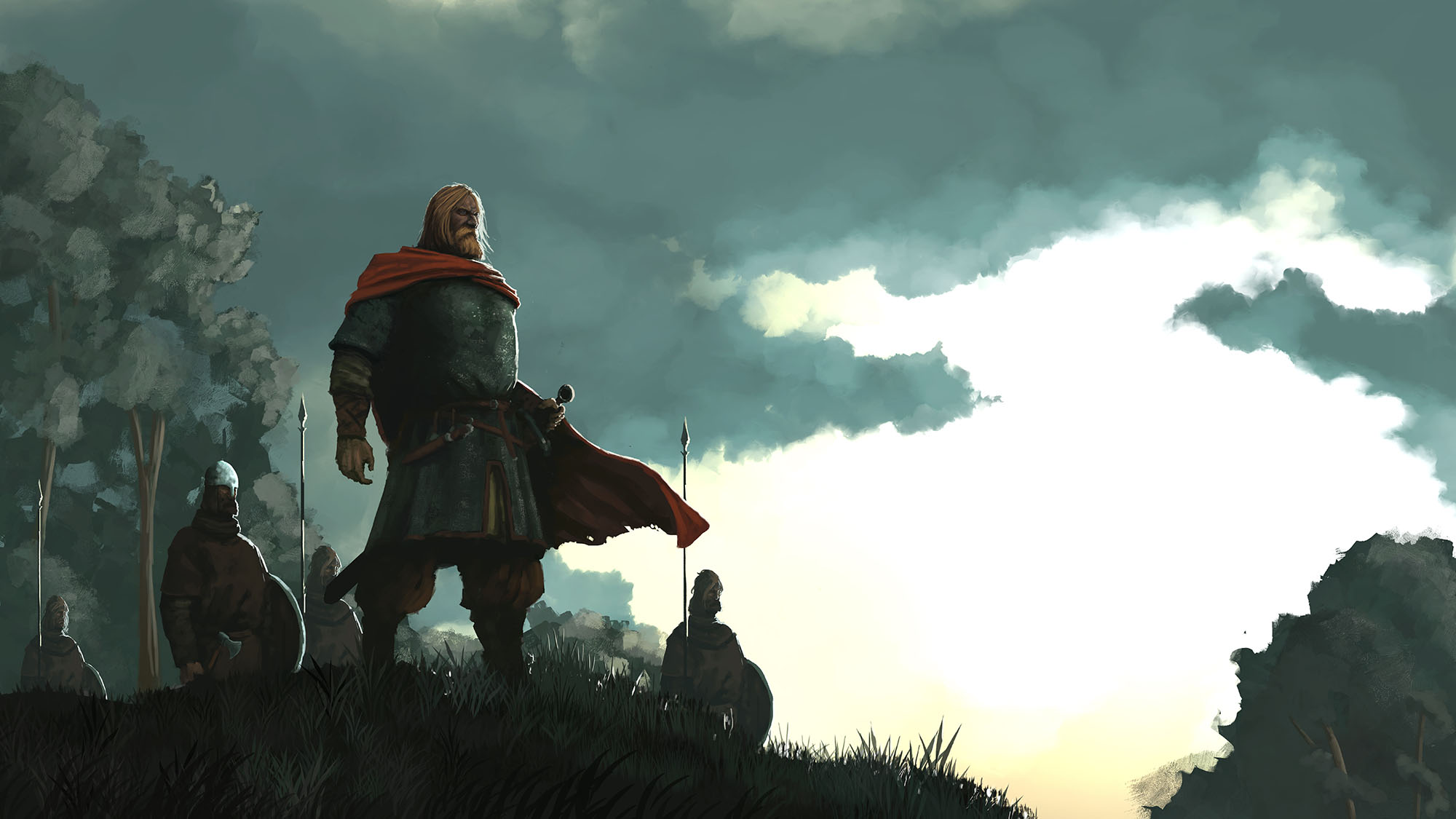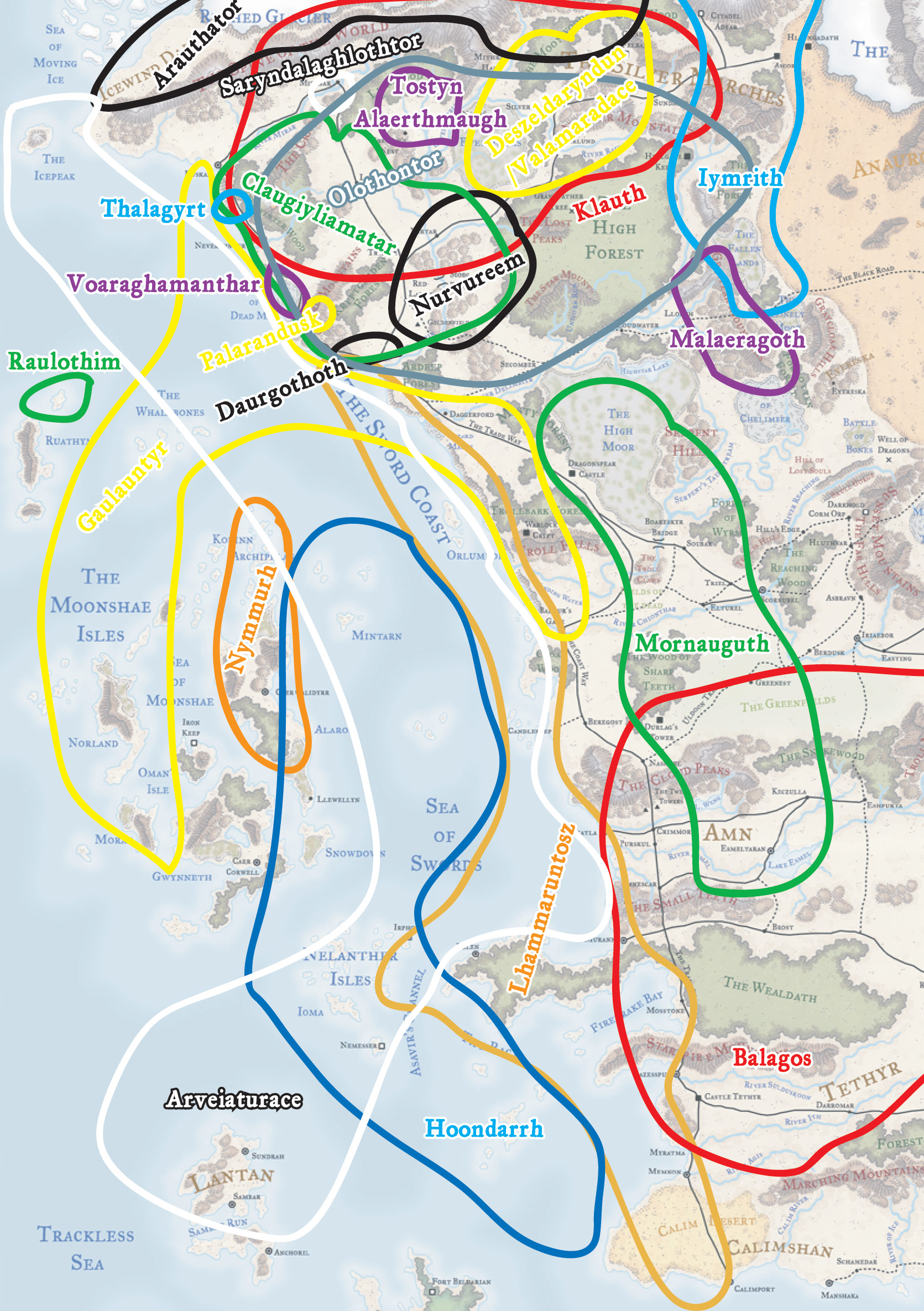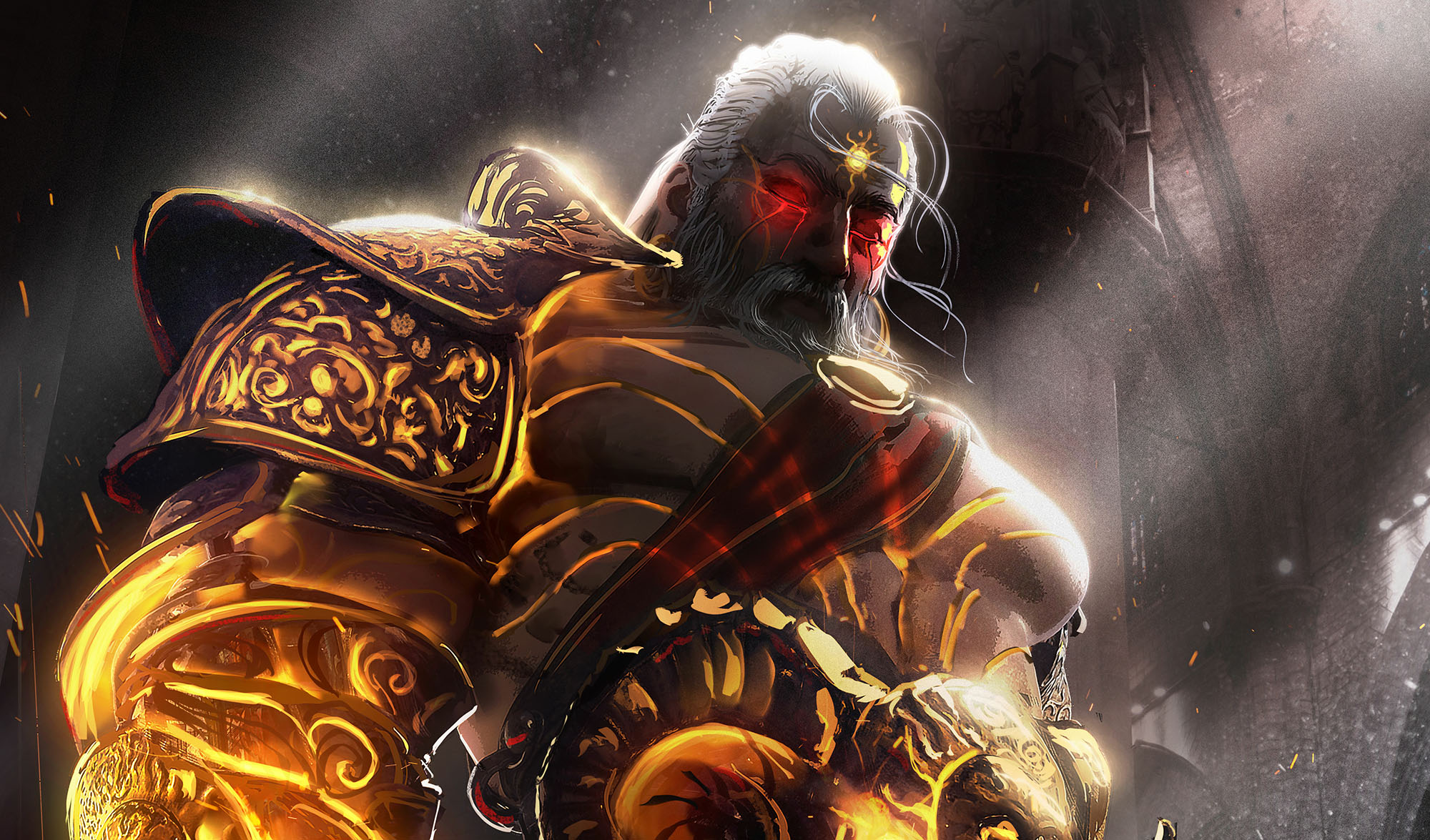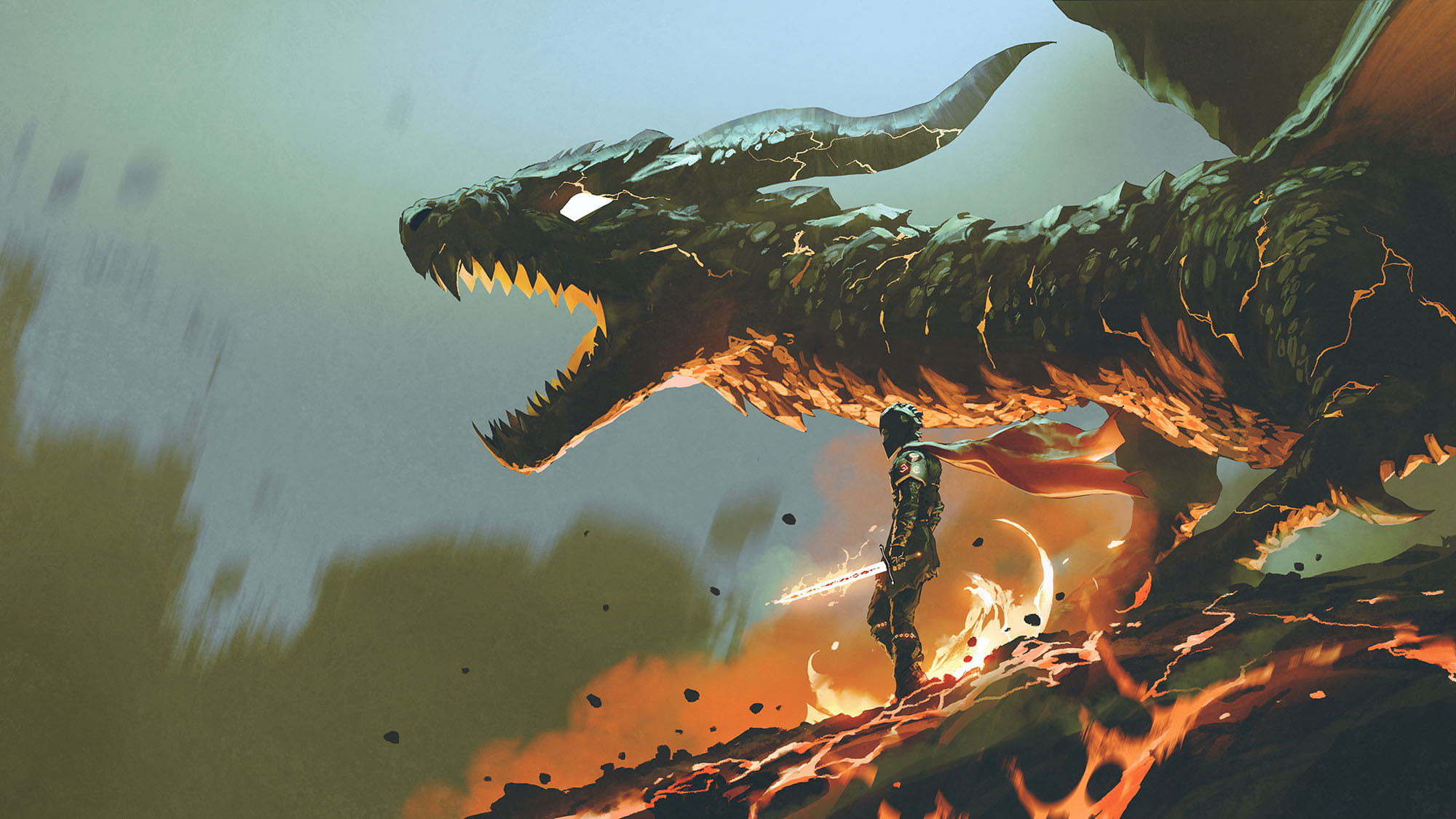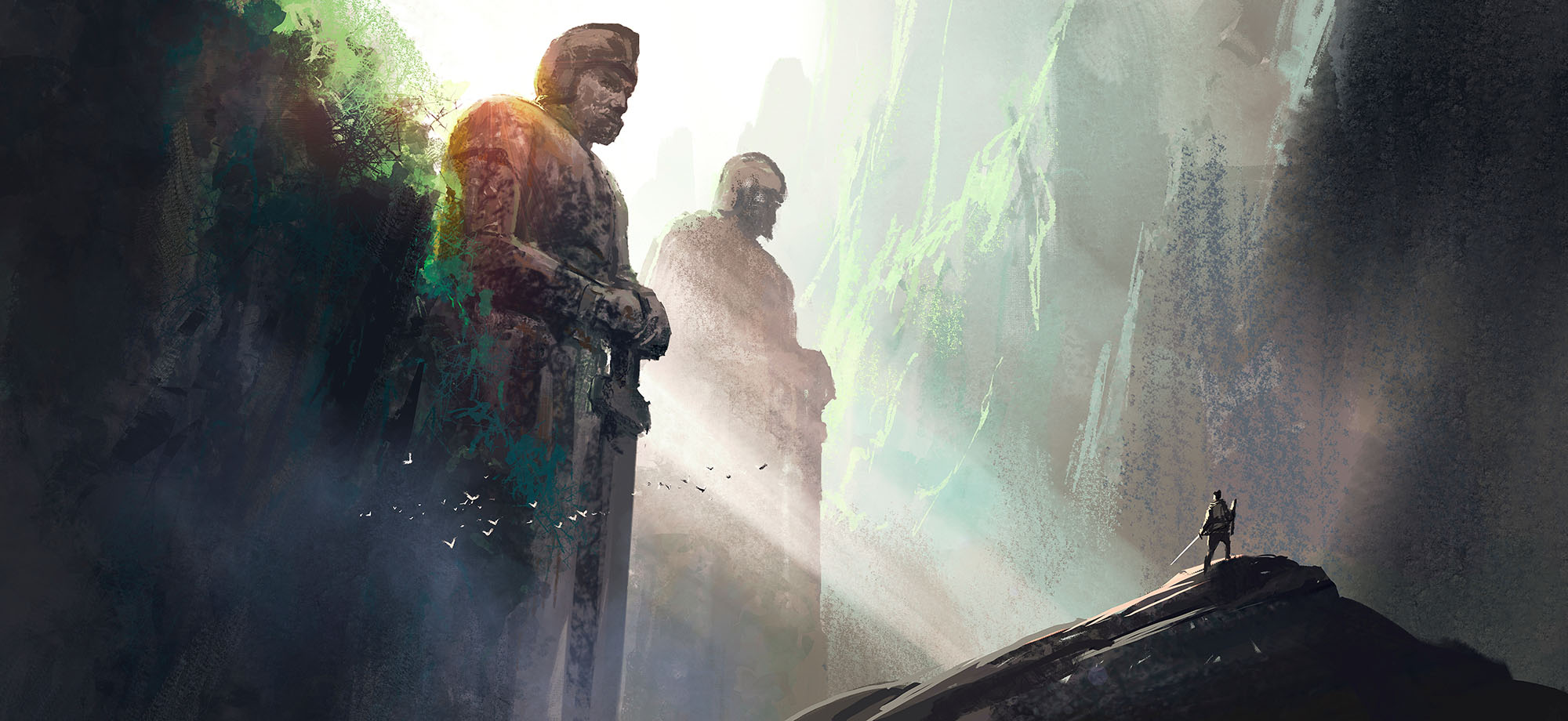We’ve now reached the final chunk of Storm King’s Thunder as published, with the PCs investigating Lord Hekaton’s disappearance.
Before we dive in too deep here, though, I think we all need to acknowledge the giant squid monster in the room: This section of the adventure doesn’t make any sense.
- The PCs are given a gambling chip that was found near where Queen Neri’s body was found.
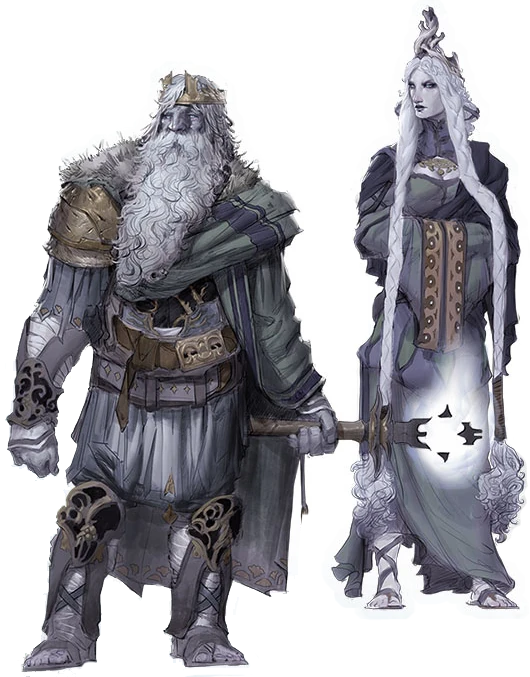 From this chip, they’re supposed to conclude that the owner of the casino must be directly involved in Neri’s death and Hekaton’s disappearance. (This, of course, is a nonsensical conclusion.)
From this chip, they’re supposed to conclude that the owner of the casino must be directly involved in Neri’s death and Hekaton’s disappearance. (This, of course, is a nonsensical conclusion.)- Lord Drylund, the owner of the casino, is involved and knows where Hekaton is being held. But… involved how, exactly? Drylund is a krakenar agent operating out of the inland city of Yartar who’s attempting to take over the local government. How does he or his team get involved in murdering Queen Neri in the Sea of Swords?
It’s not just that the evidentiary trail is flimsy and fragile. (Although it is.) The more fundamental problem is that Storm King’s Thunder never actually explains what happened to Queen Neri or Lord Hekaton. We know very broad generalities (Queen Neri was “ambushed” and Lord Hekaton was “tricked” while investigating her death), but no specifics. And even these generalities are actually contradictory. (In one section, Lord Hekaton is said to have been kidnapped while going to a location where he had been falsely told the assassins were. In another, he was attending a meeting with fake representatives of the Lords’ Alliance and believes he was “betrayed” by them.)
This lack of specificity is one of the reasons why this mystery is dysfunctional: It’s all well and good for the detectives to be in the dark about what happened, but if the writer’s understanding of the murder is limited to “somebody killed them in one of the rooms in this mansion with some kind of weapon,” then it’s going to be pretty tough for them to lay down any meaningful clues.
WHAT REALLY HAPPENED
Mirran, Nym, and Serissa are the daughters of King Hekaton and Queen Neri, who rule from the storm court in Maelstrom. King Hekaton was a strict and conservative ruler, seeking always to live within the light of Annam and to adhere to the Ordning. Queen Neri, on the other hand, sought to temper her husband’s wraths and was also something of a reformist; she believed that the giants could not only make peace with the “small folk” — the humans and elves and dwarves and halflings — but that such an alliance could mean prosperity for small- and giant-folk alike.
Five years ago, Serissa ascended above her elder sisters in the Ordning. King Hekaton responded by officially recognizing her as the heir apparent.
Mirran and Nym did not like this, but there was nothing they could do: The Ordning is the Ordning.
Nevertheless, their bitterness and resentment grew, and they began to leave Maelstrom on sojourns together. These journeys eventually took them north to the Spine of the World, where they searched for the lost Eye of the All-Father in the hopes that they would be able to commune with Annam, discover why he had chosen Serissa over them, and perhaps even right the great wrong which had been done to them.
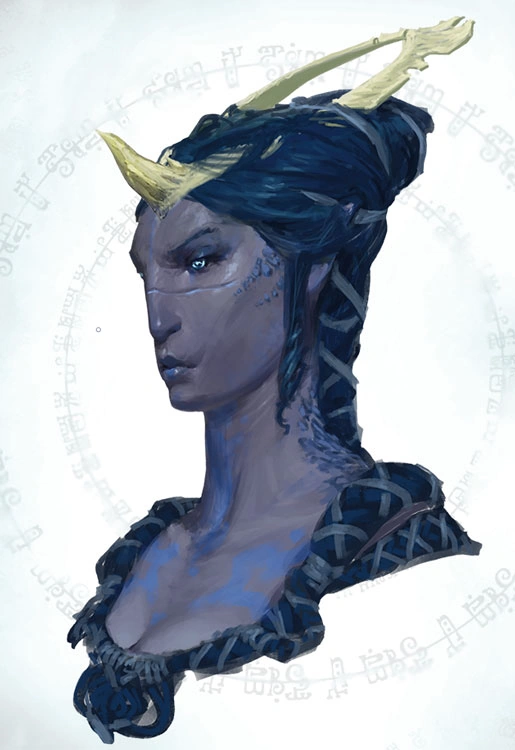 What they found instead was the wyrm Iymrith. Long ago, her daughter Chezzaran (SKT, p. 73) had been scarred by a storm giant raiding party and she had never forgiven the storm giants. She approached Mirran and Nym in disguise as a storm giant, intending to lull them into a sense of false confidence and then murder them. When she learned who they were, however, and heard their tale, she conceived an even greater revenge. She befriended the sisters and used them to infiltrate the Storm King’s court.
What they found instead was the wyrm Iymrith. Long ago, her daughter Chezzaran (SKT, p. 73) had been scarred by a storm giant raiding party and she had never forgiven the storm giants. She approached Mirran and Nym in disguise as a storm giant, intending to lull them into a sense of false confidence and then murder them. When she learned who they were, however, and heard their tale, she conceived an even greater revenge. She befriended the sisters and used them to infiltrate the Storm King’s court.
And then the Ordning was broken.
Suddenly Mirran and Nym weren’t helpless any more: If the Ordning no longer existed, then their sister no longer had divine favor elevating her above them.
Their father, however, persisted. He wanted to hold faith with Annam, even if Annam had forsaken them. He refused to reverse his decision and Serissa remained heir apparent. At this point, they likely didn’t require Iyrmith’s counsel for their resentment to blossom into rage, but it certainly helped.
Iymrith convinced them that “working with the small folk” was the reason that the Ordning had been broken: If they could break their mother’s friendship with the small folk, they might repair the Ordning… and, if so, they would almost certainly find themselves raised once more above their sister! Then their father would have no choice but to acknowledge them!
NERI’S PEACE
Queen Neri had formed friendships with the Order of the Blue Moon, a Selunite knighthood who operated out of the House of the Moon temple in Waterdeep. Each month, on the night of the full moon, the knights would gather at a secret chapterhouse hidden in the Red Rocks islands known as the Hall of Reflected Moonlight, and there Queen Neri would meet with them. She was particularly close with High Moonknight Xale, an elderly aasimar who was the leader of the order.
With the breaking of the Ordning, Neri was more convinced than ever that an alliance with the small-folk was essential. With Xale acting as a go-between, a meeting was arranged with Laeral Silverhand, another devotee of Selune who had recently become Open Lord of Waterdeep.
Queen Neri even convinced her husband to attend the meeting, bringing with them only a small force of four honor guards in “the spirit of trust and peace.” In the name of security, only their three daughters and Imperator Uthor, King Hekaton’s brother and commander of the king’s garrison, were privy to the details of Neri’s Peace, as it was known.
THE BETRAYAL
Iymrith, of course, learned of the meeting from Mirran and Nym. It was the perfect opportunity.
Iymrith formed an alliance with the Kraken Society because she needed both muscle and agents to carry out her schemes. It was an easy sell to Slarkethrel, as breaking Maelstrom’s power would remove a major impediment to the kraken’s imperial designs beneath the waves of the Sea of Swords.
- The Skum Lord, based out of Skullport beneath Waterdeep, created forged correspondence from High Moonknight Xale to Laeral Silverhand, purportedly delaying the meeting by a fortnight.
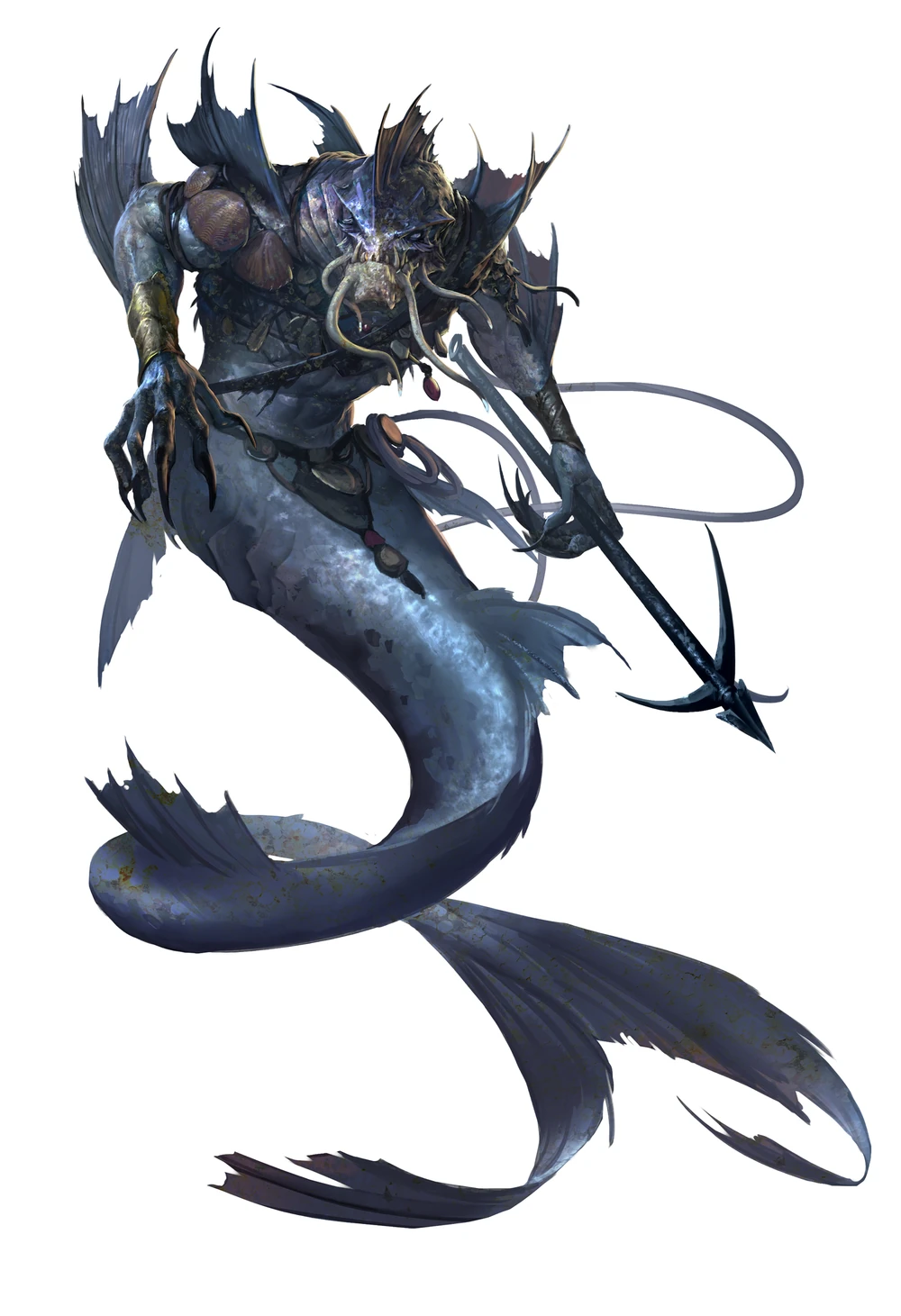 The Skum Lord’s agents also intercepted Laeral Silverhand’s replies.
The Skum Lord’s agents also intercepted Laeral Silverhand’s replies. - Ascalian merrow warlocks provided a siren’s cage, a powerful artifact which was smuggled into the Hall of Reflected Moonlight and, when activated, dropped all the knights into a deep magical sleep.
- Lord Drylund of Yartar provided a company of mercenaries, who disguised themselves as Knights of the Blue Moon, rode to the coast to meet Lord Hekaton and Queen Neri, and then ambushed them.
- The were-shark Reefkin of Neverwinter simultaneously cut-off the storm giants’ escape to the sea.
The plan worked perfectly: Queen Neri was killed. King Hekaton was captured and loaded onto a specially prepared vessel called the Morkoth (SKT, p. 221).
Design Note: In the published campaign, Queen Neri is killed in one vague encounter and then King Hekaton is kidnapped during an even vaguer encounter. By collapsing both outcomes into a single event, we vastly simplify things for ourselves. (We also sidestep awkward questions like, “If your wife has just been killed, why would you wander off into an ambush all by yourself instead of bringing like a bajillion guards with you?”)
AFTERMATH
The siren’s cage was retrieved and, a few hours later, the Knights of the Blue Moon awoke. The unnatural slumber baffled them and Xale was confused why neither Queen Neri nor Laeral Silverhand had appeared for their meeting. He attempted to contact Neri via a sending spell, but received no response.
When Hekaton and Neri failed to return to Maelstrom, Imperator Uthor journeyed to Red Rocks. There he discovered his sister-in-law’s body, surrounded by ample evidence that she had been murdered by the very small-folk she had sought to make peace with. With his elite guard, Uthor followed the trail back to the Hall of Reflected Moonlight, slew the small garrison there (most of the knights had returned to Waterdeep with the passing of the full moon), and ransacked the place looking for evidence of what they had done with Lord Hekaton. (He found nothing, of course.)
Back in Maelstrom, Mirran and Nym were shocked. This wasn’t what they had wanted… but they also weren’t exactly upset about it, either. Whatever second thoughts they might have had were quickly quashed by a more pressing realization: Their implication in regicide gave Iymrith the ultimate blackmail to use against them.
“Don’t worry, though,” Iymrith told them. “We’ll still make you the Queens of Maelstrom!”
… they just need to deal with their sister first.
Design Note: Why not cast raise dead on Queen Neri? This is a question that D&D adventure writers frequently just ignore. The go-to answer is simply that the soul of the victim isn’t willing to return, and you can just kind of handwave why Queen Neri wouldn’t want to come back.
Option #2: The merrow warlocks crafted some sort of soul-binding poison and her soul is trapped in the Abyss. Or, alternatively, a soul-binding crystal and now her soul is held captive in the sunken city of Ascarle.
Option #3: The breaking of the Ordning and the withdrawal of Annam’s light from the giants also means that giants can’t be raised from the dead at the moment. (Their souls can depart this world, but the road back from Annam’s kingdom is shut.)
Also: Why not just kill King Hekaton, too? That’s because Iymrith has a clever scheme. If Hekaton was dead, Serissa would simply ascend to the throne. With Hekaton alive-but-missing she’s only acting as regent, and the situation in Maelstrom is more unstable. (The Kraken Society thinks this is a crackin’ idea — pun intended — because this sort of destabilize-and-exploit is their modus operandi.)

